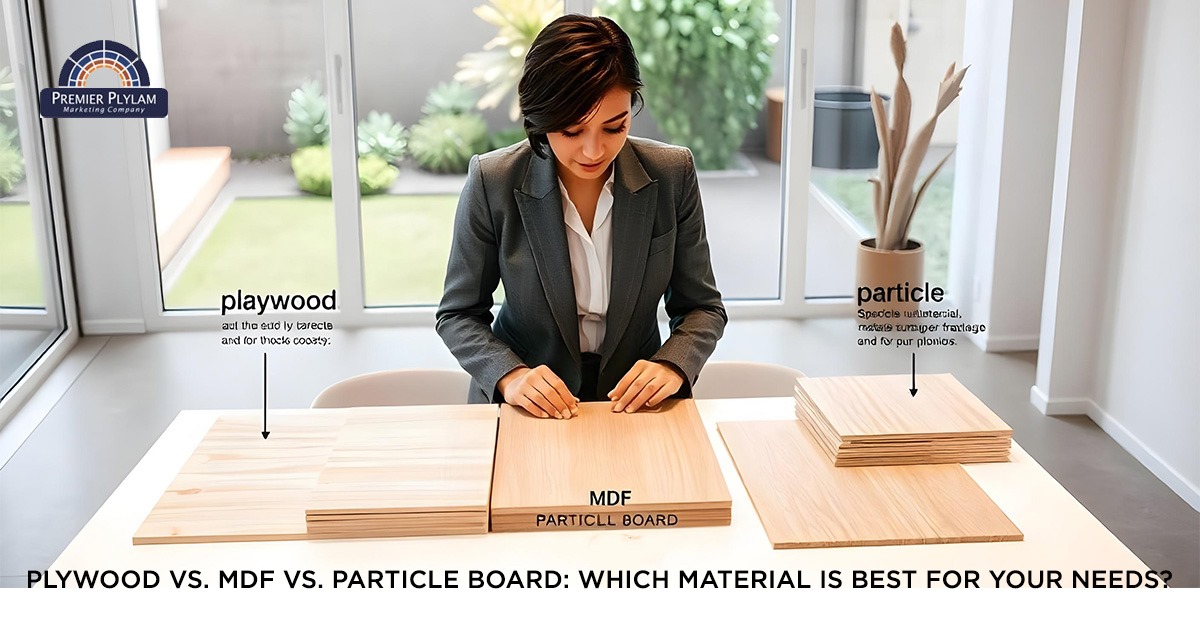There are three main types of manufactured wood available from the regular stock used to make furniture or interior projects such as plywood, medium-density fiberboard(MDF), and particle board. Each of these has certain advantages and disadvantages; being aware of the same will help in choosing what best suits your needs. At PremierPly, they are here to take one through differences like those of popular materials and help them choose the right material for their project.
1. Plywood
Manufacturing plywood involves bonding multiple thin layers, also termed plies of wood veneer. In order to increase their strength and resist different kinds of pressures, the layers are kept in directions different from one another.
Advantages
Strength and Durability: Generally, plywood is strong; it doesn’t warp or crack easily, and it finds application in structural uses such as cabinets and flooring.
Water resistance: There are numerous types of plywood; thus, it comes with water-resistant types that make it effective in places like kitchens and bathrooms.
Versatility: Being a versatile appliance, it’s useful for application purposes ranging from furniture up to wall paneling.
Disadvantages
Cost: Generally, it is more costly than MDF and particle board.
Surface Finish: More finish is to be given to afford good smoothness on the surface.
2. MDF (Medium Density Fiberboard)
MDF is produced by breaking up residuals of hardwood or softwood into fine particles combined with resin and then compressing these into panels.
Advantages
Smooth Surface: MDF offers a very smooth, uniform surface that is often preferred for painting or veneering.
Inexpensive: Typically MDF is moderately less expensive than plywood but is solid enough for most non-structural usages.
Easy to Work With: It cuts, drills, and shapes easily, making it ideal for decorative pieces, such as moldings or custom furniture.
Disadvantages
Not Water Resistant: MDF can swell or degrade with the presence of water, hence it isn’t suitable for highly humid areas.
Less Durable: It is not that strong as compared to plywood and might sag after a certain period under heavy loads.
3. Particle Board
Particleboard is also made by taking particles of wood, like chips and sawdust, mixed with resin to press and glue the particles together.
Advantages
Cost-Effective: Much cheaper compared to the other two, it does wonders in low-budget projects.
Light weight: Comparatively lighter than plywood and MDF, this may become an advantage for furniture that is moved around a lot.
Disadvantages
Weak Structure: It is the least durable of the three types and can chip or break very easily under stress.
Not Moisture-Resistant: Like MDF, chipboard is susceptible to water damage and is not a good option in areas with higher humidity.
Which Material Is Right for You?
In the end, it is a matter of needs and budget. If it needs to be strong and resistant, plywood is an excellent option. MDF is great when making decorations and custom pieces since it provides a smooth surface that is easily shaped. If you are into making lighter furniture and low on budget, particle board might be an option, but it is far less resilient.
In PremierPly, they will guide you through finding the best materials for your next project. Understanding the strengths and limitations of each material can easily help you make the right decision in either plywood, MDF, or particle board.
Conclusion
Each one of them has some positive aspects and fields of application, either plywood, MDF, or chipboard. Knowing their properties will facilitate making the best choice for your space, be it for kitchen cabinets, office furniture, or wardrobes. Let Premierply guide you in choosing the appropriate material for your next project.

